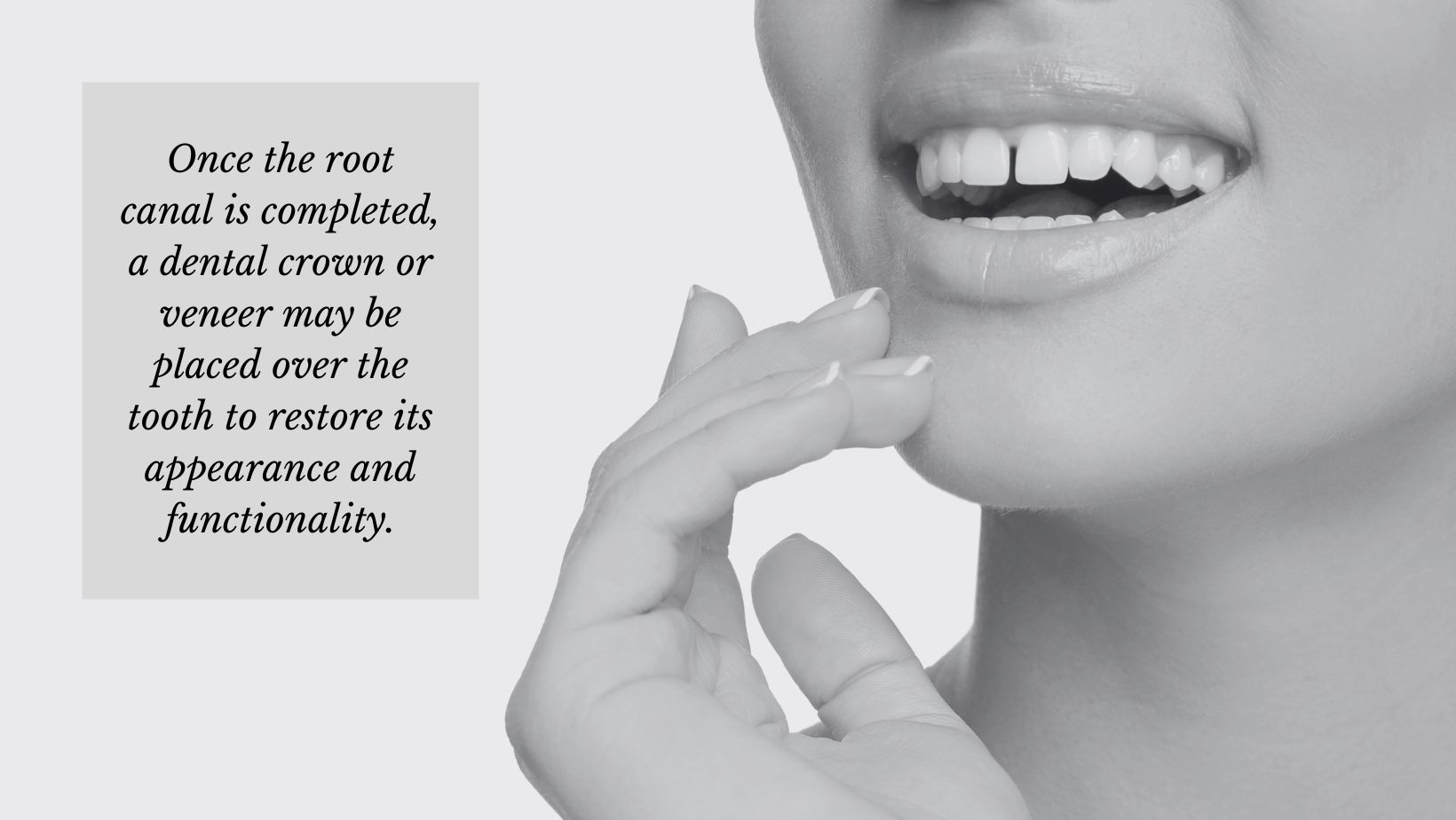Root canals are often associated with the back molars. However, patients sometimes need a root canal on a front tooth. Find out when this dental procedure might be the best solution, what treatment and recovery is like, and how it may impact the patient’s smile.
When is it Necessary to Have a Root Canal on a Front Tooth?
Dentists perform root canals for several reasons: to relieve pain caused by an infected tooth, to keep the infection from spreading, and to save the tooth. A root canal entails removing inflamed or infected pulp, inserting a filling, and sealing the tooth. Often, teeth in the back of the mouth become infected and need root canals. But in some cases, performing a root canal is the best way to save an injured or infected front tooth. A compromised front tooth can occur due to severe tooth decay, trauma, or cracks on the same tooth.
The dental pulp is a soft tissue containing nerves and blood vessels that helps the tooth grow during development. However, once the tooth is fully formed, it can survive without the pulp. This is why it’s possible to remove bad pulp from a tooth in order to save it.
Signs a Front Tooth Might Need a Root Canal
Upon examination, a dentist might recommend a root canal for a front tooth if there is:
- Persistent toothache or sensitivity to hot and cold.
- Discoloration or darkening of the affected tooth.
- Swelling and tenderness in the surrounding gums.
- Visible cracks or fractures on the tooth’s surface.
Front Tooth Root Canal Treatment
A front tooth root canal treatment is also known as an anterior root canal and includes incisors and canines. Like a root canal for molars, the goal of this procedure is to remove the infected or damaged pulp from the tooth’s root canal system, clean the area thoroughly, and then seal it to prevent further infection and save the tooth. Here is an overview of what the front tooth root canal procedure involves:
Examination and X-rays
The first step is a thorough examination by a dentist or endodontist (a dentist who specializes in root canal treatments). X-rays are taken to assess the extent of the damage and determine if a root canal is necessary.
Anesthesia
Before starting the procedure, the dentist will administer local anesthesia to numb the area around the affected tooth. This ensures the patient will not feel any pain or discomfort during the root canal.
Accessing the Pulp
Once the tooth is numb, the dentist will create a small access hole in the top of the tooth, usually on the backside of the front tooth. This access allows the dentist to reach the pulp chamber and root canals inside the tooth.
Removing the Pulp
Using specialized dental instruments, the infected or damaged dental pulp is carefully removed from the pulp chamber and root canals. The dentist will also clean and disinfect the entire area to eliminate bacteria and prevent reinfection.

Shaping the Canals
The root canals are shaped using fine dental files to create smooth and tapered pathways for the filling material. This step ensures the canals are ready to be sealed effectively.
Filling the Canals
Once the canals are prepared, the dentist fills them with a material called gutta-percha. Gutta-percha is a rubber-like substance that helps to seal the canals to prevent bacteria from re-entering.
Sealing the Access Hole
After the canals are filled, the access hole is sealed with a temporary filling material. This protects the tooth until a permanent restoration is placed.
Dental Crown Placement
In most cases, a front tooth that undergoes a root canal will need a dental crown to provide strength, support, and restore the tooth’s natural appearance. The dental crown is typically customized to match the color and shape of the patient’s other teeth.
Follow-up Care
After the root canal and dental crown placement, the patient might experience some sensitivity, which should subside within a few days. Maintain good oral hygiene and follow the dentist’s instructions for best results.
In general, a front tooth root canal procedure is less complex than a root canal on molars due to the single-root structure of front teeth. The advancements in dental technology and techniques have made the procedure more comfortable and successful, ensuring the patient can maintain a healthy and natural smile.
How Does a Front Tooth Root Canal Treatment Affect a Smile?
Many people worry about the cosmetic aspects of a root canal on a front tooth. While a root canal can leave the affected tooth dark or looking “stained,” cosmetic advancements in dentistry make it possible to whiten the tooth so it matches surrounding teeth. Once the root canal is completed, a dental crown or veneer may be placed over the tooth to restore its appearance and functionality. If a crown is not needed, whitening treatments might be possible. Because discoloration is coming from the inside of the tooth, the dentist may recommend internal bleaching.
Front Tooth Pain After Root Canal
A root canal is a somewhat invasive dental procedure and can cause tooth discomfort following the procedure. Soreness surrounding the treated tooth is normal but should subside within 3 to 7 days. The patient should be cautious when it comes to brushing, flossing, and chewing certain foods after their root canal. If pain persists, the patient should meet with their dentist for further care. Root canals can indeed be performed on front teeth when necessary to address issues with the dental pulp. This procedure not only provides pain relief but also preserves the natural appearance and function of the tooth. If you experience signs of infection in your front tooth, consult a qualified dentist who can evaluate your condition and determine if a root canal treatment is the right solution.


